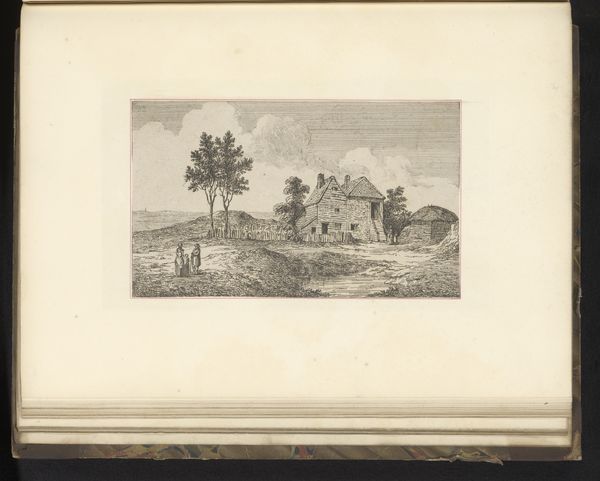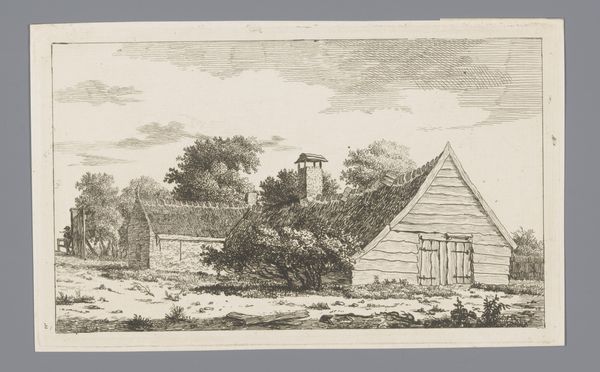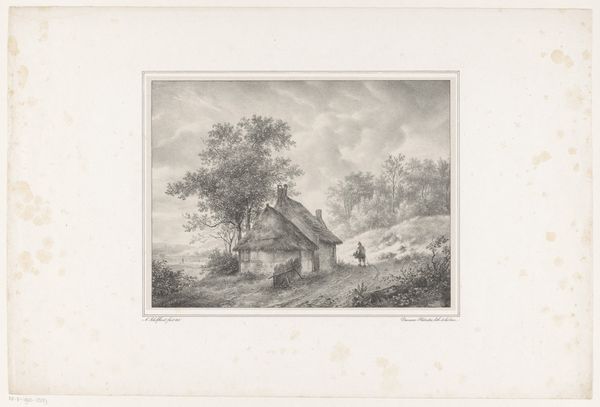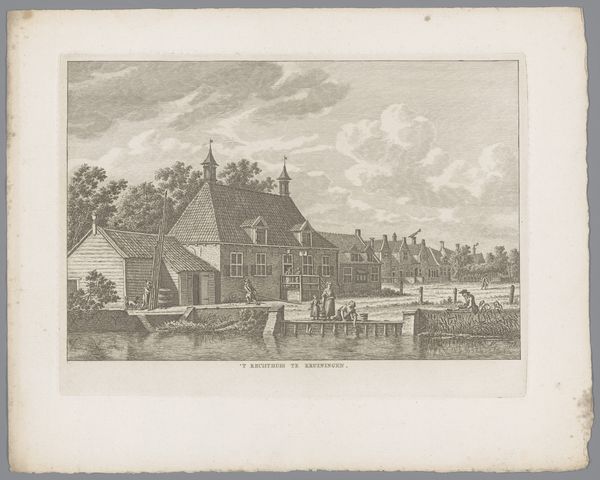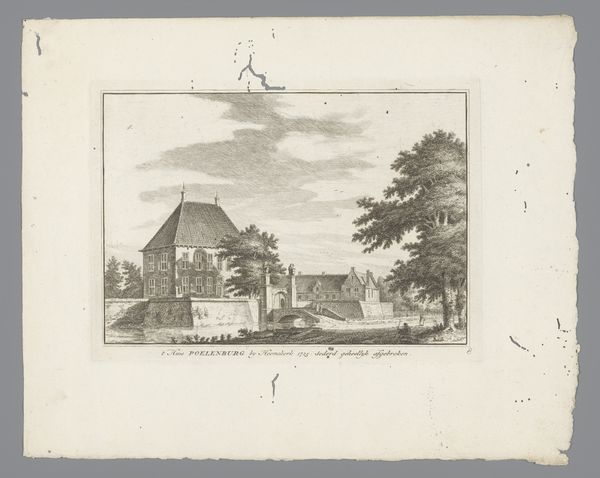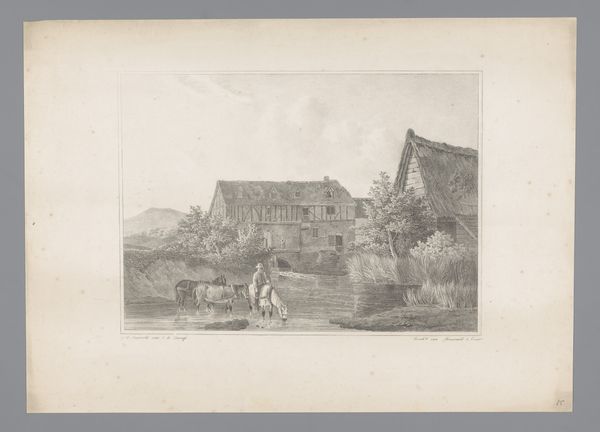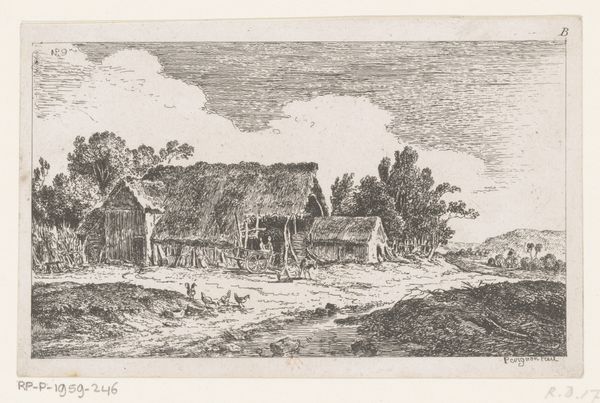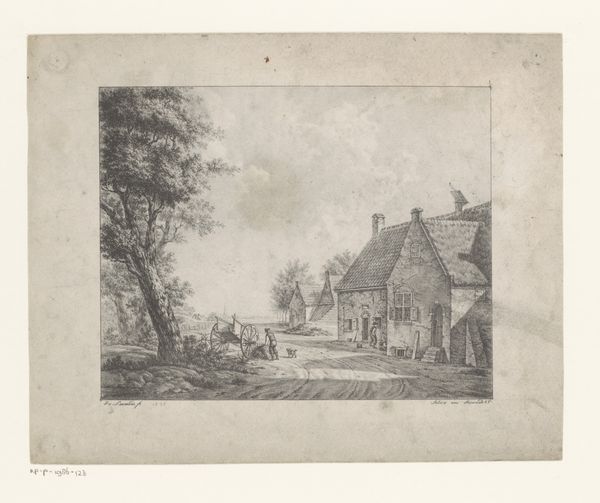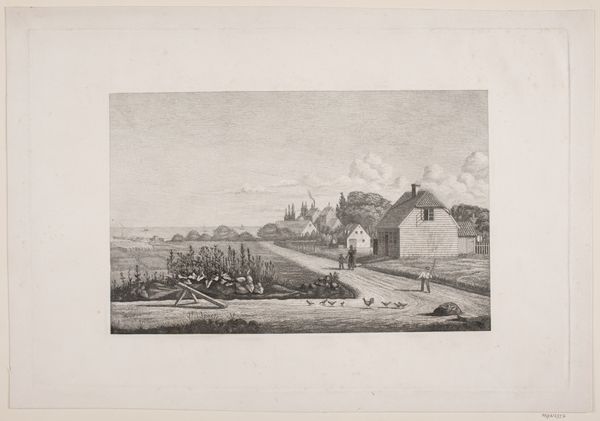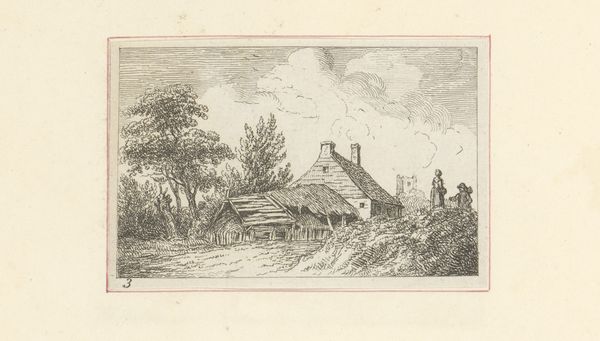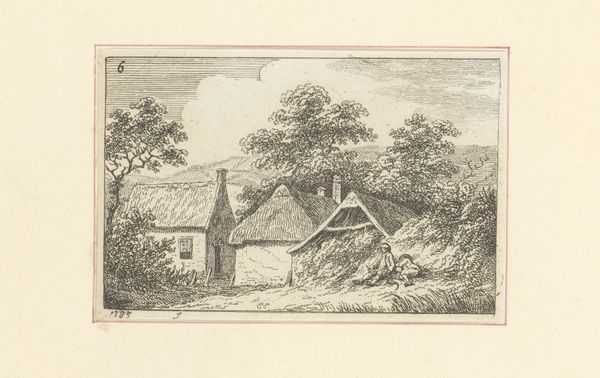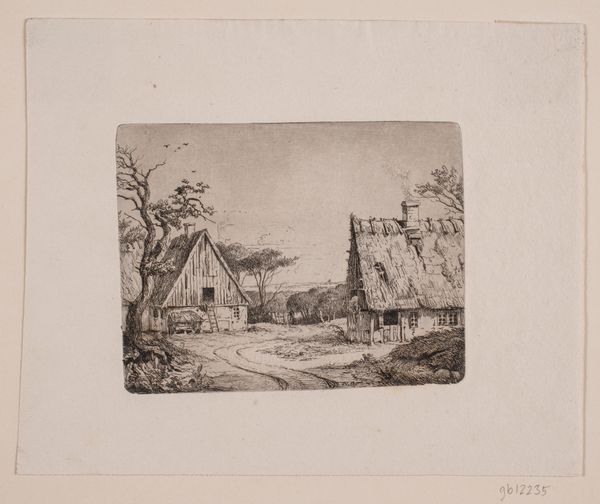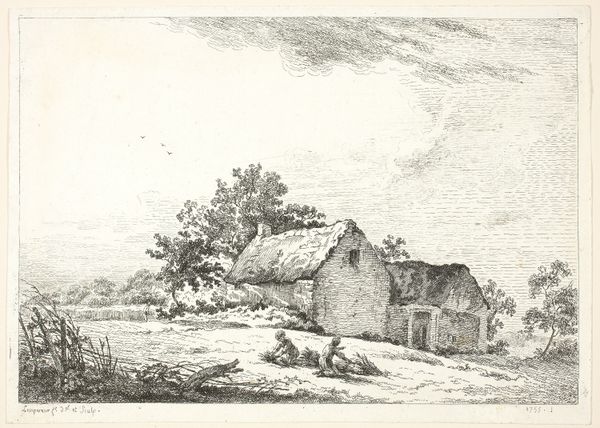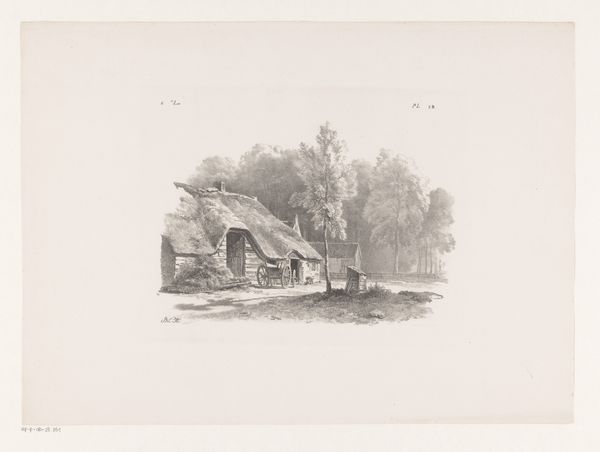
print, engraving
#
neoclacissism
# print
#
landscape
#
genre-painting
#
engraving
Dimensions: height 170 mm, width 195 mm
Copyright: Rijks Museum: Open Domain
Curator: The print before us, titled "Man zaagt een blok steen doormidden," dates from around 1800-1825. It's by an anonymous artist and currently held in the Rijksmuseum collection. Made using engraving techniques, it depicts a genre scene within a landscape. Editor: I'm struck by how much focus there is on the actual labor involved. It's not romanticized; it's just a man sawing stone. What is it about this piece that really speaks to you? Curator: Notice the meticulous rendering of the materials—the rough texture of the stone, the wooden supports, the tools scattered around. These are the tangible elements of production, of work. How does this relate to Neoclassicism? Doesn’t that period seem more preoccupied with ideal forms than the grit of daily labor? Editor: I would agree that those materials definitely show the act of labor taking place, however, what do you make of the classical architectural elements of the stone that the worker is in the process of sawing? Curator: Excellent question! The presence of architectural elements already taking form in the stone transforms the entire image from being just about labor. It asks the question about the process of transformation of raw materials. What kind of buildings or statues might these stones become? How will they then be experienced by the public and how different will that experience be from the actual labour of creating that form? Editor: That really makes me rethink the image. The transformation process of raw materials is certainly one to contemplate. I'll be looking at prints differently from now on, considering not just the image but the materials, labor, and social context embedded within them. Curator: Precisely! Understanding the processes, materials, and context unveils layers of meaning often overlooked in traditional art historical analysis.
Comments
No comments
Be the first to comment and join the conversation on the ultimate creative platform.
